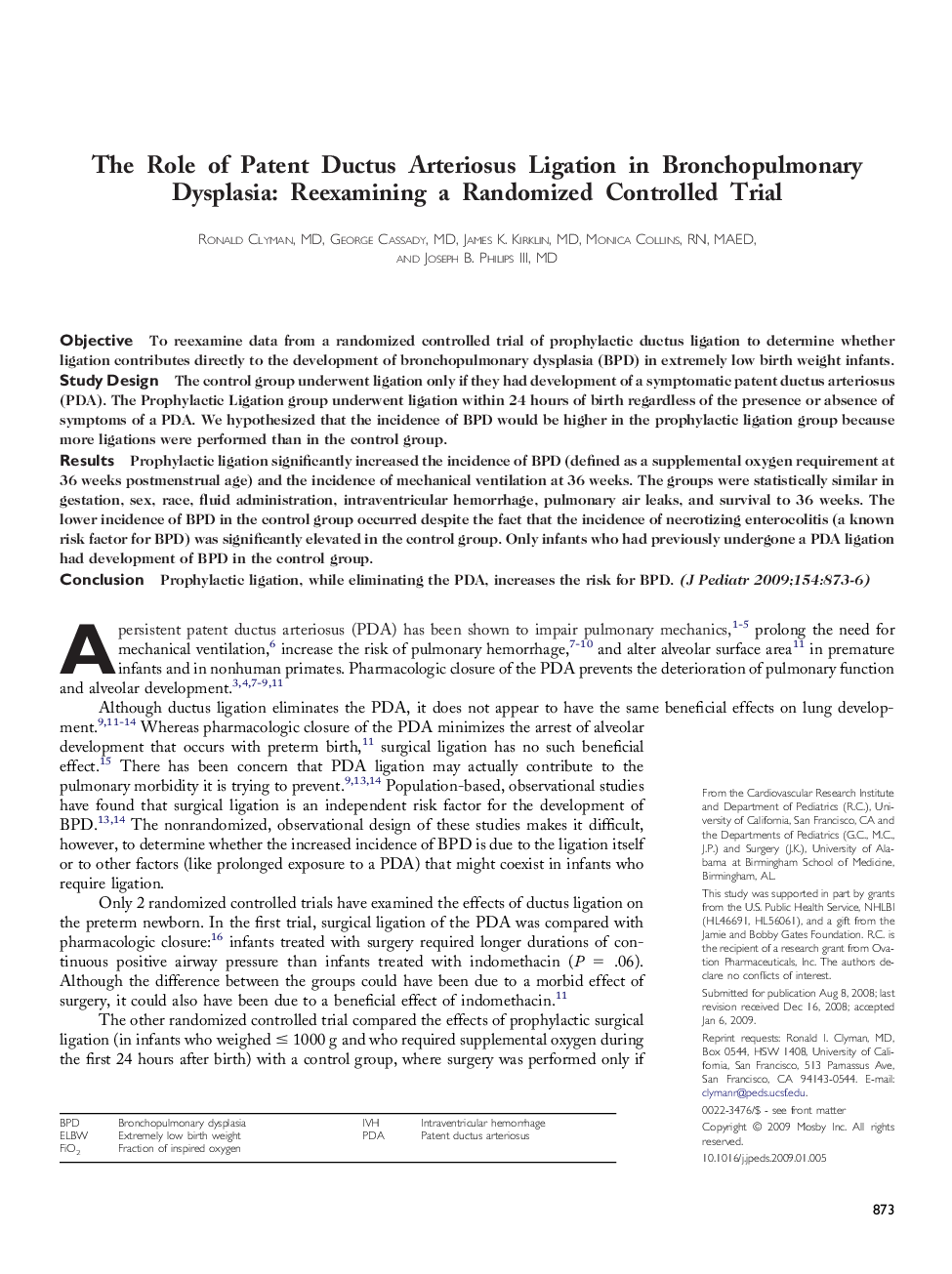| Article ID | Journal | Published Year | Pages | File Type |
|---|---|---|---|---|
| 4166924 | The Journal of Pediatrics | 2009 | 4 Pages |
ObjectiveTo reexamine data from a randomized controlled trial of prophylactic ductus ligation to determine whether ligation contributes directly to the development of bronchopulmonary dysplasia (BPD) in extremely low birth weight infants.Study DesignThe control group underwent ligation only if they had development of a symptomatic patent ductus arteriosus (PDA). The Prophylactic Ligation group underwent ligation within 24 hours of birth regardless of the presence or absence of symptoms of a PDA. We hypothesized that the incidence of BPD would be higher in the prophylactic ligation group because more ligations were performed than in the control group.ResultsProphylactic ligation significantly increased the incidence of BPD (defined as a supplemental oxygen requirement at 36 weeks postmenstrual age) and the incidence of mechanical ventilation at 36 weeks. The groups were statistically similar in gestation, sex, race, fluid administration, intraventricular hemorrhage, pulmonary air leaks, and survival to 36 weeks. The lower incidence of BPD in the control group occurred despite the fact that the incidence of necrotizing enterocolitis (a known risk factor for BPD) was significantly elevated in the control group. Only infants who had previously undergone a PDA ligation had development of BPD in the control group.ConclusionProphylactic ligation, while eliminating the PDA, increases the risk for BPD.
